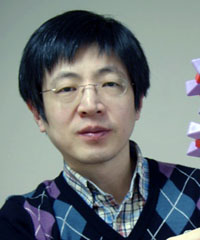 A research team led by Professor KIM Jin-Soo of SNU’s Department of Chemistry and Professor KIM Hyongbum of Hanyang University’s Department of Biomedical Science and Engineering has developed a new method to easily select cells with mutated genes using so called “genetic scissors”.
A research team led by Professor KIM Jin-Soo of SNU’s Department of Chemistry and Professor KIM Hyongbum of Hanyang University’s Department of Biomedical Science and Engineering has developed a new method to easily select cells with mutated genes using so called “genetic scissors”.
Creating mutations in genes is a useful research method to study the roles of specific genes and develop gene therapies. Geneticists can mutate certain genes to see what the characteristics of the gene are. Biological engineers can change the genome of crops and flowers to make them inherently resistant to blight and insects. Medicinal researchers are trying to develop cell therapy products which can cure genetic diseases by causing mutations in the genome. Curing a genetic disease this way is called gene therapy, and is rapidly becoming a promising field of research according to researchers worldwide.
Zinc-finger nucleases, or “genetic scissors”, are a useful tool for generating gene mutations. Genetic scissors can literally cut out a specific fragment of the genome in various sizes which subsequently can be deleted, while other genes can be inserted in place of the deleted fragments. The use of genetic scissors greatly extended the scope of genetic research by enabling researchers to overcome the limitations of traditional methods, which used to be based on in vitro experiments on small DNA fragments. Professor Kim Hyongbum said, “Gene scissors can be used in treating various genetic diseases and virus diseases such as AIDS. Especially, it can contribute greatly to the development of cell therapy products using stem cells.”
Although gene modification has a wide range of uses in various research fields, it has usually been difficult to select modified genes from normal genes. To detect cells with modified genes, Professor Kim’s team used small circular DNA fragments called plasmids. The plasmids encode mutated genes for dysfunctional green fluorescent proteins (GFPs). GFPs are useful markers in genetic research as cells with a green fluorescence due to the use of GFPs can be visually detected. When gene scissors modify the cell’s genes, they also modify the mutations in the GFP gene of the plasmid. The GFP genes can then function properly, discharging a bright green fluorescence. In the case of cells in which gene scissors cannot modify genes, mutated GFP genes are not modified and remain invisible. Since only the cells with genes modified properly by the gene scissors glow, it is easy to separate them from the unmodified cells. According to Professor Kim Jin-Soo, this method can increase the efficiency of gene therapy and will make it easier to generate selective mutations in different types of cells.
These research results were published in Nature Methods (Impact factor 20.7), a prestigious journal in biological engineering. The team’s research was also introduced in Chemical & Engineering News (C&EN), a weekly magazine published by the American Chemical Society (ACS).
Written by JANG Eunju, SNU English Editor, ejjang1025@snu.ac.kr ?
Reviewed by Eli Park Sorensen, SNU Professor of Liberal Studies, eps7257@snu.ac.kr
Proofread by Brett Johnson, SNU English Editor, morningcalm2@gmail.com

